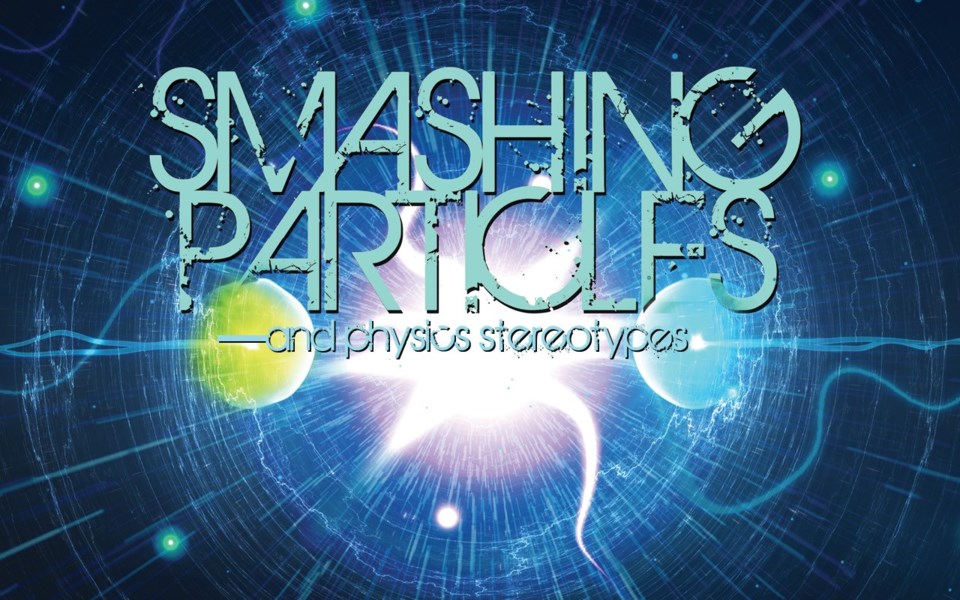
Step 1: The Set-Up
[pullquote-1]
Neil deGrasse Tyson, American astrophysicist, author and podcaster
Full disclosure: In Grade 12, I dropped out of physics because I thought it was so boring and "out there."
The reasoning of a 17-year-old may be as mysterious as the universe itself (see astrophysicist Neil deGrasse Tyson, above). But I'm glad to tell you I've finally come to my senses, my physical senses.
So if you, too, think physics is "out there," A), I get it, and, B), think again, especially if you hang out in Whistler and are into the lifestyle here.
"You know all that mountain biking and skiing and snowboarding we do at Whistler? Physics is all about that—the motion and action involved. The hurtling down hills, jumping off ramps, the twisting, turning, stopping—even the crashing," says Whistler Secondary School physics teacher Jamie Walzl.
"We all get physics, and we don't even realize it."
Walzl, who has taught physics to hundreds of Grade 11 and 12 kids, is considered something of a rock star for getting people turned on, cranked up and generally over the moon about physics. And that's the other part of the equation: Physics is also really exciting.
"Once you get into it, it never ends," he says.
His students are so keen, each of the 13 years he's taught, he's taken them to the University of British Columbia's (UBC) Physics Olympics (and here you thought the Winter Games were the only Olympics in town!). There, students from across B.C. tackle problems like calculating how many aluminum cans it takes to build a mountain-bike frame.
So physics is far from boring, and it isn't really out there, even if it can help us understand what is "out there."
Physics, from the Greek phusis, meaning "nature," is simply the science concerned with the properties of matter and energy. I'll leave it to the master himself to explain it: "What we call physics comprises that group of natural sciences which base their concepts on measurements; and whose concepts and propositions lend themselves to mathematical formulation," wrote Albert Einstein in a 1940 Science essay. The applications are myriad.
"All those daily things we do come from physics. We couldn't text our mom unless there was physics involved, unless someone had sorted out how to transmit information across distances with no wires," says Walzl.
Mechanical engineers, like Walzl once was, apply physics to build things like steam turbines and escalators, or air conditioners that need to be ever more efficient in the face of climate change. Physics makes airplanes safer, improves healthcare, and helps the art world.
But it's particle physics—the physics involved with the teeniest, tiniest particles in nature—that really makes my heart sing. It lies at the heart of places like Switzerland's CERN, the world's largest particle physics laboratory, and UBC's TRIUMF, considered one of the globe's leading subatomic physics research centres, with their particle accelerators and amazing scientists who help us understand what the universe—and us!—are made of, and where it, and we, came from. It's also the heart of remarkable initiatives that are the perfect antidote to what ails our world.
"Physics transcends borders because physics doesn't care where you're from or what your background is—it only cares about finding absolute truths," says Walzl.
In the world of physics like you find at CERN and TRIUMF, collaboration trumps rivalry, truth trumps lies (I use that verb pointedly)—and making the impossible possible is the order of the day.
TRIUMF-ant Molly
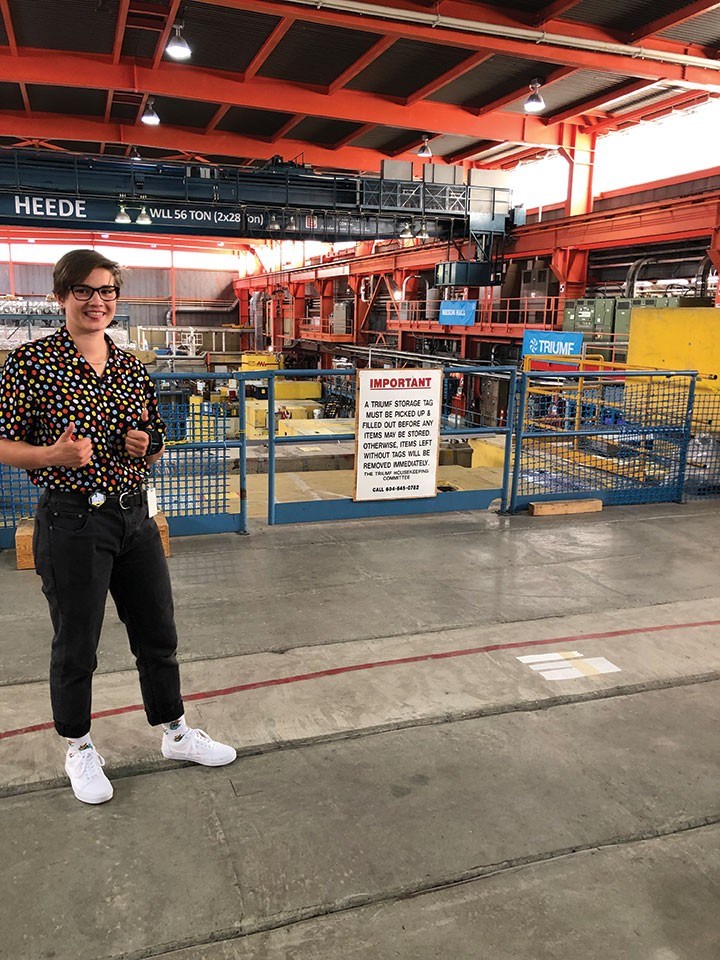
Long—a former student of Mr. Walzl's and ex-junior ski racer who knows all about energy and motion—was one of five B.C. students selected this summer for the Young Engineers and Scientists Fellowship at TRIUMF, Canada's particle accelerator centre located on UBC's campus (See "Whistler Secondary School grad completes prestigious fellowship at leading particle accelerator centre," Pique, Sept. 30).
"Physics appeals to me because I like to understand how things work. Physics basically makes up everything, so it will help me to better understand the universe and why we exist," says Long.
At TRIUMF, guided by physicist Pietro Giampa—who worked on a dark matter experiment two kilometres underground at SNOLAB, the world's deepest clean room located in a mine near Sudbury, Ont.—Long helped build a bubble chamber for an experiment to detect dark matter, some of the most elusive and mysterious particles around. (See her question about dark matter in Step 2.)
Moments like this open doors—and minds—for young people.
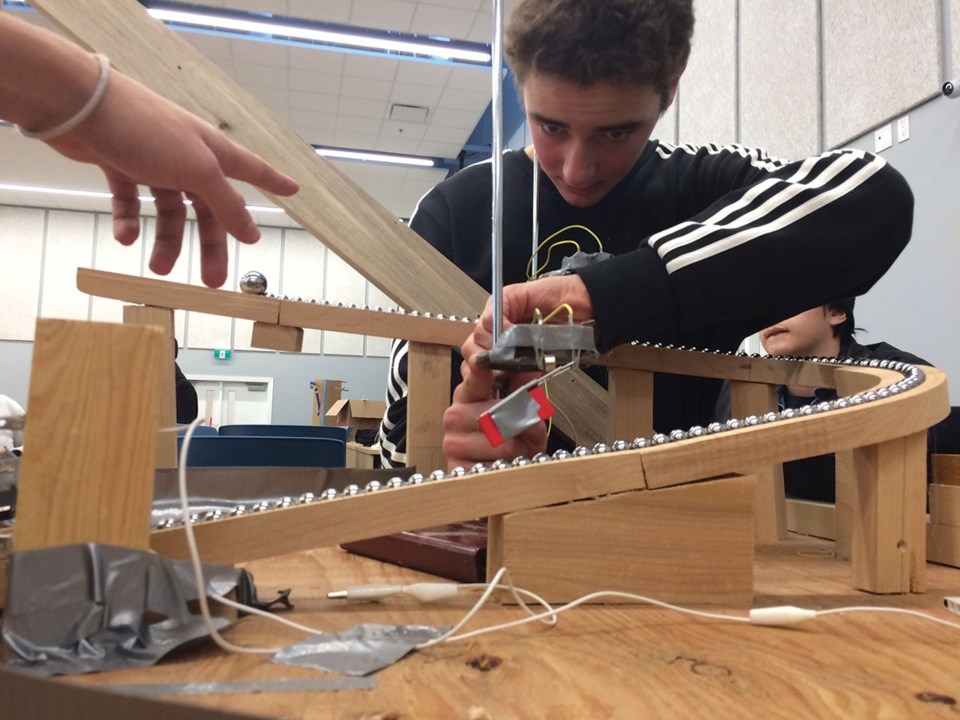
Founded in 1968 by Simon Fraser University, UBC and the University of Victoria, TRIUMF and the people who work there—in fact, physicists from across Canada—enjoy a stellar international reputation.
"I think it's safe to say TRIUMF punches above its weight class," says Stu Shepherd, communications specialist at TRIUMF. In terms of connecting to CERN, the place for particle physics on the planet, you could say TRIUMF (fiveyearplan.triumf.ca), with its network of 20 universities, is a convener for much of Canada's efforts.
Our country's relationship with CERN is complex and complicated (Learn more here). Essentially, Canada participates in various experiments and projects through organizations like TRIUMF, Sudbury's SNOLAB, and Canadian Light Source in Saskatoon. ATLAS-Canada—a cluster of Canadian institutions active on the ATLAS experiment—is a major focus. And although Canada is a non-member state, we've made significant contributions over the years, most recently a $12-million contribution, which TRIUMF is leading, for the current Large Hadron Collider (LHC) upgrade.
Usually about 200 Canadian researchers use CERN's facilities, including grad students, engineers, and, of course, physicists—a community Long hopes to land in.
"I'd love to go there one day," she says. "And working there would be pretty amazing!"
The hotspot for physics... and one of the coolest places around
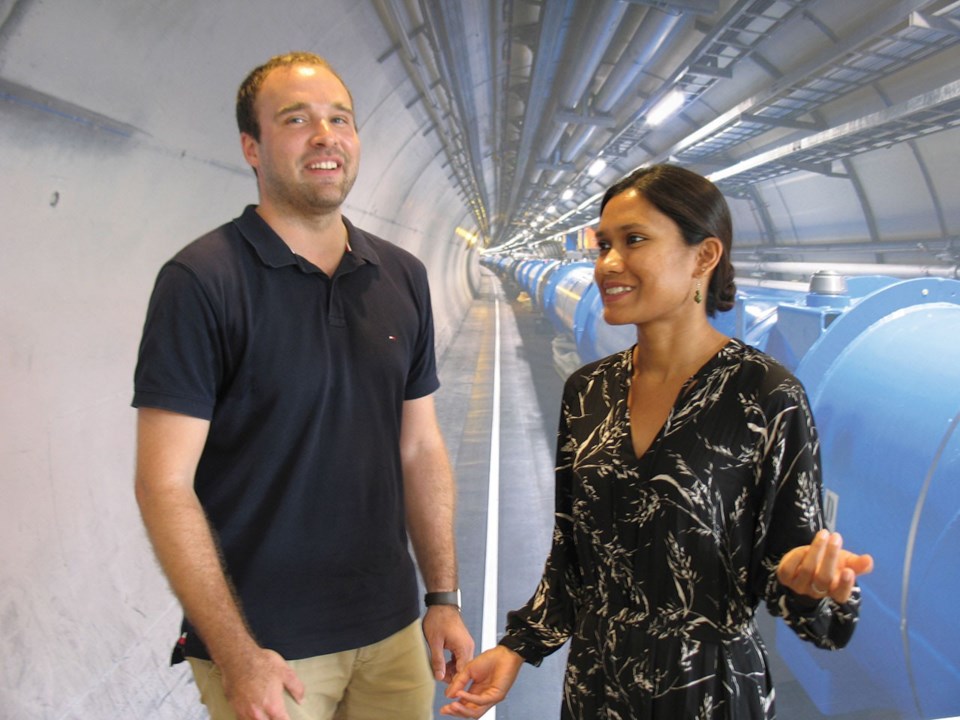
Say "CERN," and most people recall the headlines in 2012 when the Higgs boson was discovered at CERN's LHC—the world's largest, most powerful particle accelerator. Located 25 storeys underground and with a circumference of 27 km, the famous collider hosts experiments with names like ALICE, LHCb, ATLAS and CMS. The last two are how the Higgs was discovered.
The LHC may be the heart of CERN, as scientists observe the tiniest sub-atomic particles smashing about to learn what makes the universe tick, but CERN is far more than that. Its greater purpose is providing the basic infrastructure for research—the accelerators and experimental areas.
Created after the Second World War, which had left Europe's scientific community in tatters and saw scientists such as Albert Einstein fleeing in droves, CERN's mandate—no surprise—is peace and cooperation. Research at CERN can only be used for peaceful purposes, and the information generated is freely available to anyone, anywhere.
Today, CERN brings together scientists from all over the world. It's like a small town of concrete low-rises, though no one lives there. Streets are named for physicists, like Route Marie Curie, and livened up with murals and sculptures. Given the many research facilities and accelerators, more people can work at CERN than live in Whistler—up to 15,000. Some 4,000 are physicists; the rest are support staff, and engineers and technicians who build the experiments physicists design.
"What we're really trying to do here at CERN is trying to understand the fundamental laws that govern the universe," says Trisha Farooque, a high-energy experimental physicist from Toronto, who is engaged in frontier research. She focuses on searches for new physics with top quarks—particles that interact most strongly with Higgs bosons.
"There is a good chance that the top quark will play a special role in any new physics that we discover," she says.
Like Farooque, Canadian research physicist Stefan Guindon also pushes boundaries, searching for physics beyond the Standard Model.
"I spend about half my time on R&D for the new high-luminosity upgrade of ATLAS and half on searching for new physics," he says via email.
Besides the deadlines and hard work physicists cope with (they can be on call for 3 a.m. data checks, or work two weeks straight), some timeframes can be long. For instance, Guindon and his team have already been working for years on sensitive detectors for the high-luminosity LHC upgrade slated for 2026.
"These detectors ... have to work in very harsh environments with so many collisions," he says. "It's like building a camera the size of a cathedral, which can take a picture every 25 nano-seconds. While it's still recording an event occurring, another one has started."
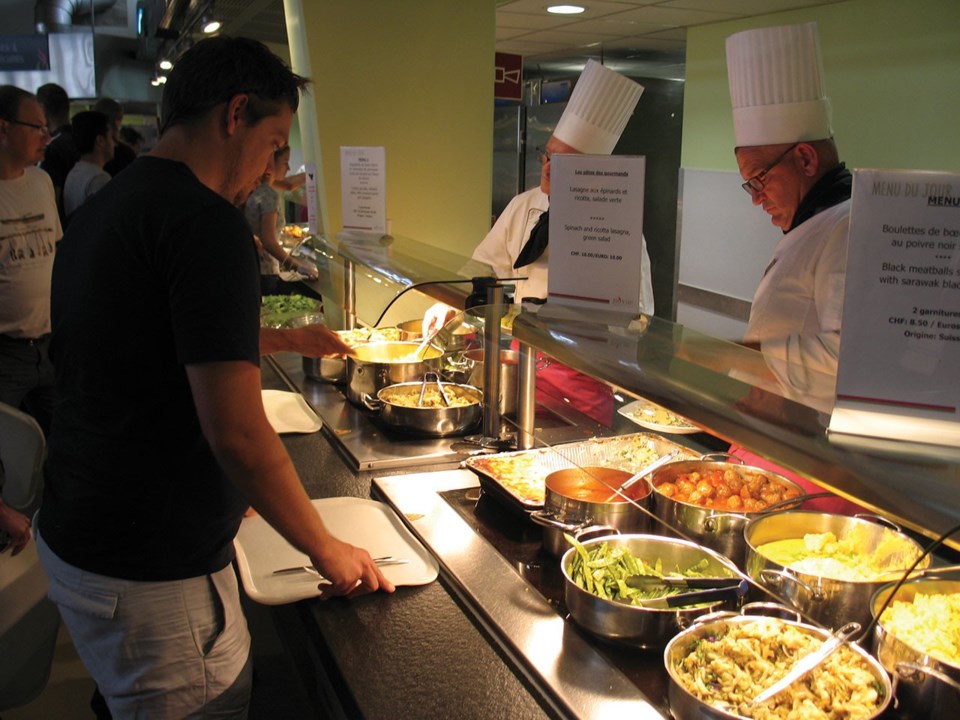
What's in it for us?
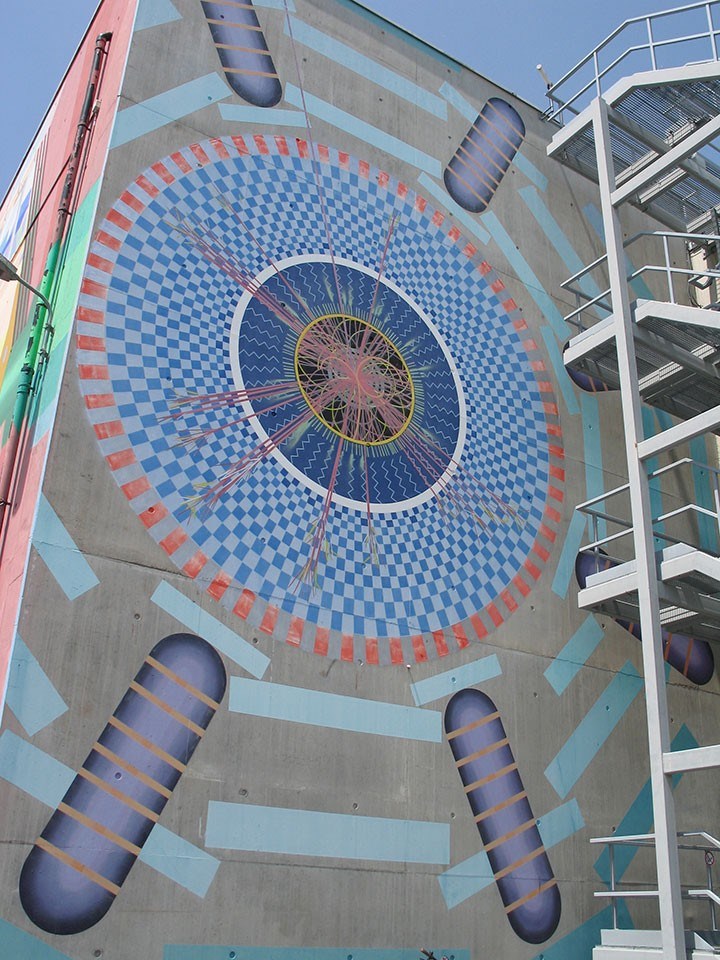
New compact, cost-effective accelerators only 10 centimetres across that generate medical therapy ions have also come from CERN. Other "miniaturized" technology tracks down art forgeries; plus we'll all be safer on airplanes—and passenger-carrying drones of the future—thanks to breakthroughs at CERN.
But one thing we especially have CERN to thank for is the World Wide Web. Computer scientist Tim Berners-Lee created the web there in 1989. Such huge amounts of data generated at CERN need to be stored and analyzed that computers all over the world are needed. Berners-Lee created the web so all those computers could "talk" to each other. In keeping with CERN's mandate of open access, the web was released into the public domain so it would be free and open to all.
(Check out Tim's brother, Mike Berners-Lee, and his bestseller on carbon emissions in one of my Pique food columns, "How bad are those bananas anyway?", May 12, 2012.)
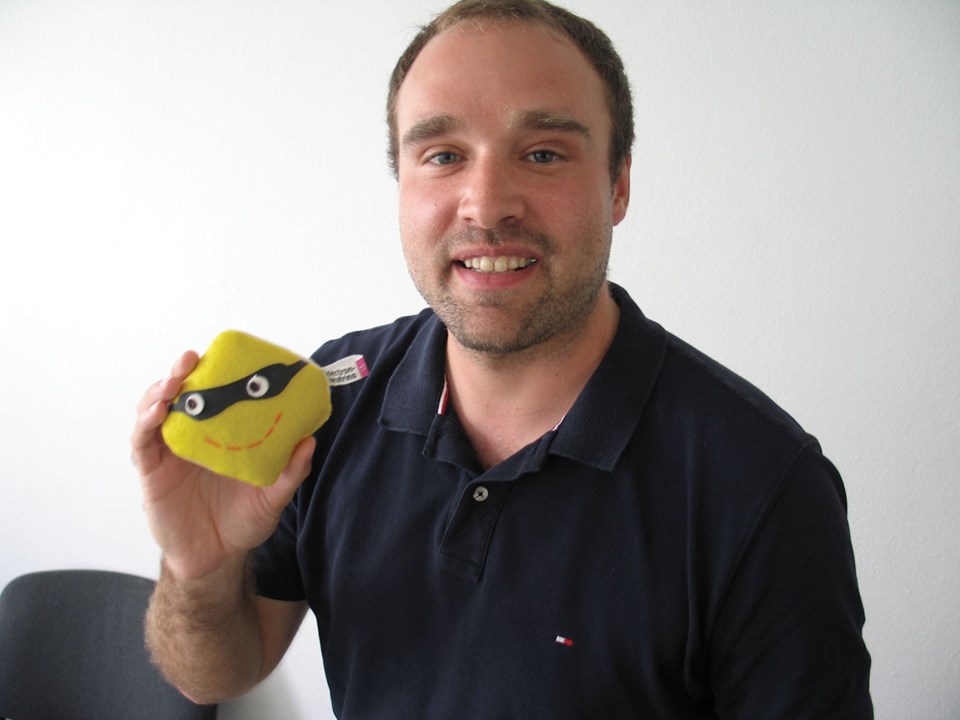
Step 2: The Experiment
How physics con-CERNs us, or: An unscientific experiment to dig out info about CERN in an unusual way.
My trip to CERN was part of the World Conference of Science Journalists held this summer in Lausanne, near Geneva. Before leaving, I asked regular people in Whistler and Vancouver—nurses, artists, students, ski buffs—to share their questions about CERN that I'd get answered by Canadian physicists working there. Here are their questions, with answers generously provided by Trisha Farooque and Stefan Guindon, both experimental physicists from Ontario who work at CERN.
Thanks to them, and to everyone who provided these excellent questions that prove how curious and engaged people are about particle physics: Taira Birnie, Paul Burrows, Judy Davis, Arthur De Jong, Kevin Griffin, Ken Lawrence, Molly Long, Geoff Olson, Tim Maryon, Marcel Richoz, Jamie Walzl and Anita Webster.
Are you concerned that, through experimentation with high-energy physics, CERN will open up another dimension and/or destroy Earth in the process?
Please don't worry. Earth is bombarded by cosmic rays at much higher energies than we produce here at CERN.
What colour are neutrinos?
Sorry, they're not coloured. To have colour, you need to have light of a particular wavelength reflected off of it, and neutrinos are so much smaller than the wavelength of visible light.
Why should I care about the work done at CERN?
Fundamental research is always important for humans and human nature. To discover the unknown has been one of the goals since human thought began—to understand our environment, our nature, where we are, our place in the universe. From the POV of art, art and science have this interwoven history: Art influences science and science influences art.
Given the current political climate, do you have concerns with still openly sharing the knowledge you gather? Is access by anyone on the internet a factor?
CERN is really about science for peace. I want to really stress that the work we do here is open to humanity. It's really important we have people from all different walks of life, all different backgrounds, involved in the research because it's important to have different ways of thinking, different ways of approaching problems. And not just from the scientific perspective, but also from the perspective of global collaboration and peace. (Guindon has worked with colleagues from Iran, Iraq, Saudi Arabia, Israel and Palestine. Scientists from China and Taiwan work together. One of Farooque's favourite eye-openers on the topic is this lovely paper by physicist Giora Mikenberg you can find online here: https://arxiv.org/abs/1608.06119.)
What technological advancements can be made, or are hoped for, as a result of discoveries at CERN?
We're doing frontier research, but a lot of technological innovations come out of it. The World Wide Web is one of the most famous examples, but there are also applications in medical physics. For example, hadron therapy is a procedure used for cancer treatment that reduces damage to surrounding tissue. And table-top accelerators are potentially the way of the future.
Science is often a methodical, slow process. How is CERN accelerating its research to help address climate change given the 12-year window we have to reduce carbon emissions?
In general, the research we're doing at ATLAS (where Guindon and Farooque work) is not directly related to climate research, though we're all aware of the changing environment and addressing climate change. But smaller experiments at CERN connect to climate change. One of them, CLOUD, studies aerosols in the atmosphere to test greenhouse gases.
What does it sound like in the beam pipes in the LHC when particles are flying through? Are there any sounds?
Unfortunately not. There's a vacuum inside the beam pipe so there is no sound.
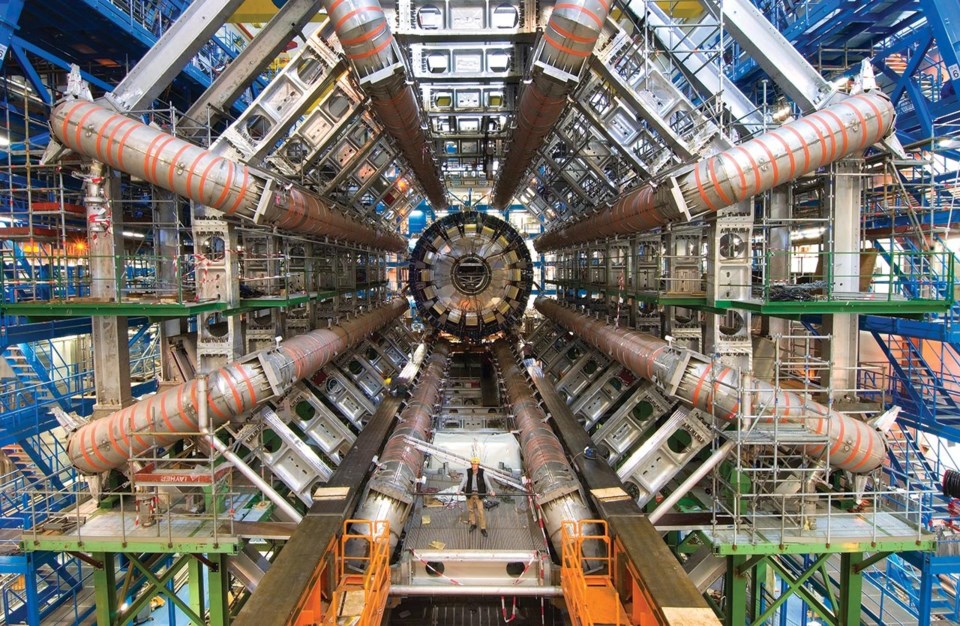
Not at all—it's the complete opposite. This is always the interesting dynamic when we talk about pushing the boundaries of the energy frontiers. It's actually the same energy as a mosquito flapping its wings and flying around, but it's in such a concentrated space that makes it so powerful.
CERN is often mentioned in The Big Bang Theory, a long-running TV sitcom. Did CERN "pitch" their institution to bring science to the people?
We did not pitch it. But sometimes they asked for a scientific advisor, so we were really happy to find out they were promoting physics. (BTW CERNies love the show, which uses real equations and insider jokes.)
Why does CERN build bigger and bigger machines to look for theoretically predicted, extremely tiny sub-atomic particles?
We really are at the frontier of our knowledge in terms of energy scales. The energy we're at when we study collisions at the LHC is actually very far away from the energy scale that was the Big Bang. So it's important we try to understand physics at higher and higher energies. Right now, that means building bigger and bigger colliders—though as technology advances, we hope this could be reduced to smaller experiments.
Why is it important to prove if the theoreticians are right or wrong?
We've measured the Standard Model, and the next new physics can be hidden just around the corner. We just don't know, and that's why we have to keep looking, because the theories we have now are going off in different directions and it's up to us, as experimentalists, to find out which of those theories is correct.
How are computer science and programming used at CERN? Is it helpful to have an understanding of these when studying physics?
Yes, yes and yes! It's really, really important. Computer programming is what we do every day, no matter what we do, from programming boards for the detectors to data analysis. There's nothing we do at CERN that doesn't involve computer programming in some way.
What inventions or discoveries at CERN have affected me, what I use, or what I do?
If you emailed your question, you used the web, which started at CERN. Touch screens did, too. We do outreach programs where we cut a television in half and show that if we move a magnet inside, you can change the colour on the screen because it's a particle gun that shoots particles at a screen. New LCD plasma TVs don't work this way, but the older ones are particle accelerators.
Why is the work being done at CERN important? How does it benefit society?
This is to do with fundamental research and the fact that it's important for us to understand the actual workings of the universe, and find a language to express it. In this respect, it's quite similar to art because we're all trying to find expressions for the way we understand things. It's also very important for people to be scientifically literate so they can't be misled with unscientific arguments.
How does studying particle physics allow us to learn more about dark matter and the properties of space and time?
That's an excellent question from a Grade 12 student! We don't know what makes up the majority of our universe. Everyday matter that makes up the building blocks of the visible universe—electrons, protons, neutrons—only accounts for about five per cent of everything. The rest is dark matter, which is roughly 27 per cent. Dark energy, which we even know less about, makes up the other 68 per cent or so. It's responsible for the accelerated rate at which our universe is expanding.
We're trying to search for a viable candidate that could be this dark matter we see, and we hope we can create it here at CERN so we can observe it. This is one of the main focuses right now, after discovering the Higgs boson—to search for potential dark matter candidates. Many experiments are doing that here at the CERN collider, and it's a research area we both work on.
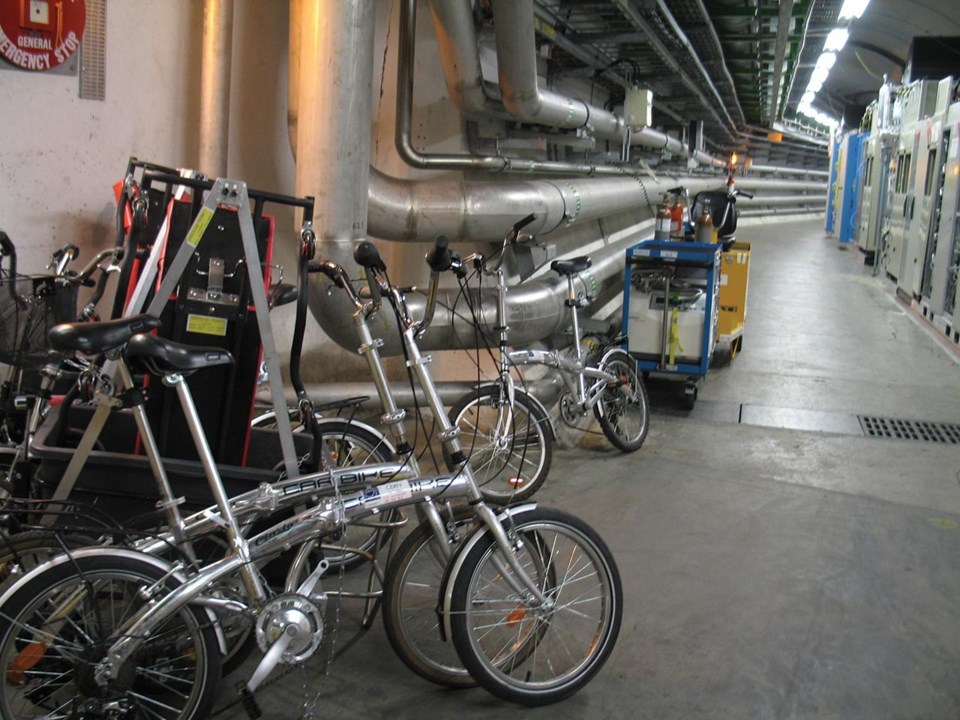
Step 3: The Conclusion
- Physics, especially particle physics, is very cool—and it's everywhere!
- It's fun smashing stereotypes about physics and the people who do it.
- Places like TRIUMF and CERN help us understand the universe, and ourselves. They build relationships; foster peace; remind us of the importance of fact-based science; and develop new, beneficial technologies. And Canadians near and far are part of it all.
- Think twice before you drop high school physics!
- Neil deGrasse Tyson is right: The good thing about science is that it's true whether or not you believe in it.
Besides the generous people acknowledged elsewhere, many thanks go to James Gillies and Abha Eli Phoboo at CERN; and Ewan Hill, Isabel Trigger, Stu Shephard and Sean Lee at TRIUMF, all of whom added invaluable input to this collaborative project.
I never met a physicist I didn't like—or one who wore a lab coat
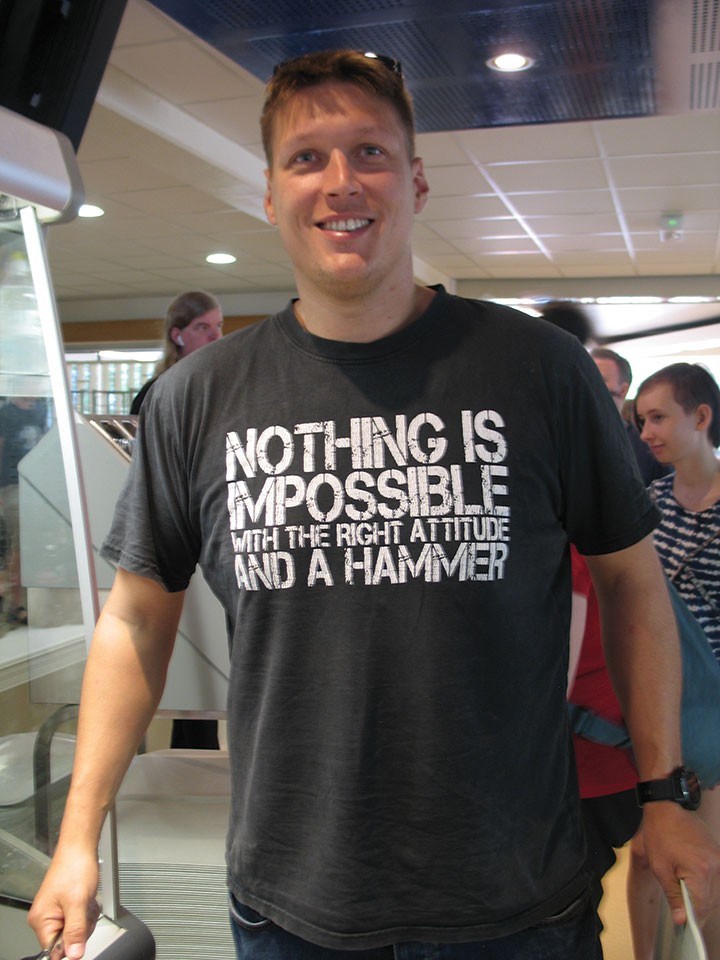
Restaurant 1 is No.1.
It might have the least creative name of any restaurant on Earth, but it's the life of the party, literally. Restaurant 1 can feed up to 8,000 people a day when both CMS and ATLAS are happening, but it's also where CERNies socialize, hang out or throw farewell parties. (People at CERN self-identify as CERNies or CERNois). Other than the security passes, everyone pretty much looks like they belong on a university campus or at Whistler. Old people, young people; smart people from all over the world are talking, laughing, cracking jokes, chowing down (with nary a lab coat in sight). It even serves beer. Did I mention the food's great, too?
CERNglish spoken here...
Everyone at CERN speaks CERNglish. It embraces many dialects and can be defined in many ways: as Italian grammar encroaching on English; a propensity to say "in principle" before every sentence; or the use/abuse of CERN acronyms in everyday speech.
...with a lot of music thrown in.
Many physicists are also excellent musicians, playing hard rock, jazz and more. Some projects are experimental (what else?). For instance, at one Montreux Jazz Festival https://www.bbc.com/news/av/uk-33468545/when-jazz-collided-with-physics, Hill was part of a CERNois group that translated data from the collider into notes while pianist Al Blatter improvised alongside.
You see lots of hiking boots...
Somebody once looked down at Hill's feet and asked him if all physicists wore hiking boots. Yes, you see them a lot. Very versatile, notes Farooque.
...and t-shirts with slogans...
The number of cool t-shirts at TRIUMF and CERN is amazing. They're often black, with rock band logos, or slogans like: "Nothing is impossible with the right attitude and a hammer."
...but no lab coats.
Physicists don't wear white lab coats. Never. Well, hardly ever. Maybe once in a blue moon he'll have to wear one in a clean room, notes Guindon, but otherwise, it's casual all the way.
For love not money.
There's another quirky physicists' T-shirt around that says a lot: "For love, not money." Physicists do what they do because they love it. A typical post-doc makes about $50,000 a year, less than a bus driver in Vancouver.
CERNois love sports and the mountains, too.
Many physicists are active outdoors, especially when they live so close to the mountains. Most physicists at CERN own hiking and skiing gear. In fact, Guindon keeps skis, a backpack and skates in his office since you never know when you'll need to go skiing or skating at the rink nearby.
Lonely chairs await you.
Sometimes scientists receive millions of dollars to do their research, but they still might put up with less than desirable work spaces because the money goes into the work. Along these lines, see Lonely Chairs at CERN http://lonelychairsatcern.tumblr.com/.
Want to get more physical?
To understand where the world was at when CERN was formed, try Albert Einstein: Out of My Later Years, a collection of his essays circa 1934-1950.
For a more poetic approach, try Carlo Rovelli's The Order of Time, or visit Vancouver's Contemporary Art Gallery to see the latest "physical" work by TRIUMF's artist-in-residence, Ingrid Koenig.
For a totally irreverent, off-the-wall experience, watch Decay, www.youtube.com/watch?v=n-NwLUPZWZc a horror flick produced at CERN by Manchester U students working there.
Cern Courier offers interesting insights into high-energy physics.
James Gillies' and Robert Cailliau's book How the Web was Born is a classic worth reading more than ever today.
Check out astrophysicist Neil deGrasse Tyson, and CERN's and TRIUMF's websites. Lots of great info there.
See Pique's travel feature on Dec. 12: it's all about CERN.



